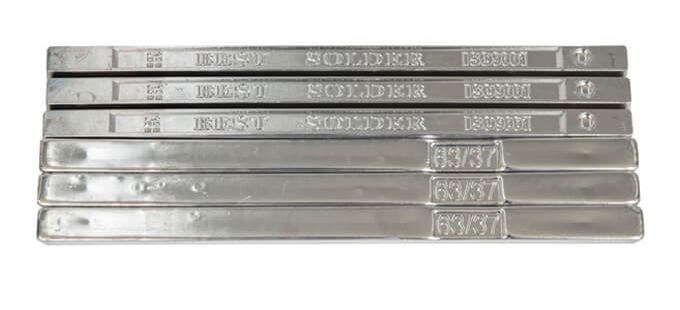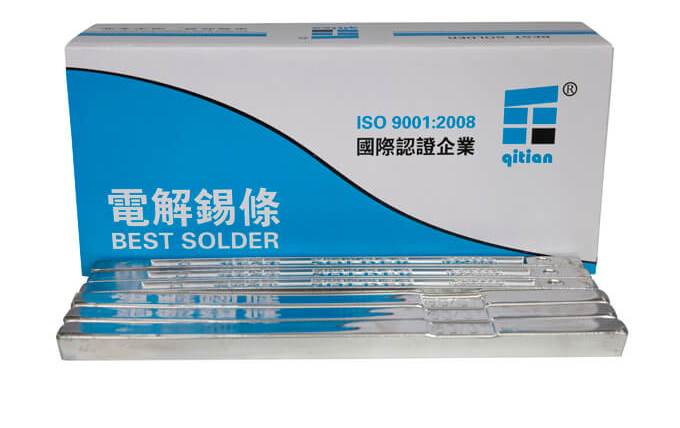Introduction to Soldering
In the modern world, soldering is a process that makes it possible to obtain an integral connection of several metal parts. The connecting material is already molten metal, which must melt at a lower temperature than the metal material of which these parts compose. You must need to know tin lead solder melting point.
This intermediate molten metal calls an alloy, and the process call soldering. Depending on what the melting point is, different types of soldering are also distinguished: fusible and refractory. So, fusible solders melt at temperatures below four hundred degrees, and refractory solders - at temperatures from five hundred to 1100 degrees.
Usually in brands, solder designates as POS, and this abbreviation stands for: tin-lead solder. If there is also some number nearby, then this figure usually indicates what percentage of the tin content is in the composition.
Classification according to tin lead solder melting point
The class of solder depends on the melting temperature:
- Gold solders are different. Soft solder achieves by melting up to four hundred degrees Celsius.
- Brazing is achieved by melting above five hundred degrees Celsius.
- Semi-hard solder achieves by melting in the range from molten tin to four hundred degrees Celsius.
Solders of classes soft and semi-solid are strong at tension from fifty to seventy Megapascals, they intend for soldering conductive parts of machines. They make by using a soldering iron or by lowering parts to be soldered into liquid solder.

Strength of Hard solder
Hard solder strength up to five hundred Megapascals, is uses as the number one strength category solder for tin lead solder melting point conductive parts with high heat and parts with major mechanical stress. Such solder produces by electrodes made of copper or graphite. Small parts solder with autogenous.
In order to solder well and correctly, one tool is not enough. You also need to know some secrets that would allow you to master the soldering technique perfectly. Perhaps it is still worth revealing a few of these secrets.
Tips and Secrets to use solder
So, the first secret is to properly use tin lead solder melting point and flux for soldering. The second important secret of soldering is keeping the tip and the soldering iron clean and, of course, heating it. There are many ways to clear a sting. Use one of them and then your work will go just fine.
The third secret is also important when soldering: the cleanliness of the soldered objects. The fourth rule that any craftsman needs to understand is simple, but necessary: connect the wires correctly when soldering and make good heating of the places where parts will solder at a certain melting temperature.
Why do you must know about tin lead solder melting point
And, of course, when working with such tin lead solder melting point, you should always take precautions. So, it is necessary to solder not at one point, but try to do this not at some distance from each other. Do not twist the ends of the parts at the melting temperature around the conductor.
Tin solder is copper phosphorus.
It is always worth remembering that when soldering, even at the lowest melting point, tin and lead vapors are released. They are very dangerous and harmful to the human body. Therefore, you should never bend over the place where soldering takes place, no matter what the melting temperature is.
After all, whatever the tin lead solder melting point, evaporation will still be harmful and will cause irreversible harm to the human body. You decide to solder in the summer, then do it either in an open space, or, if possible, by an open window.
The main rule for such soldering is to ventilate the room well. And when the work finishes, it will also be necessary to thoroughly wash your hands using soap.

Many products need to be connected reliably
Many products need to connect reliably and for a long time. But here the necessary tightness, unfortunately, is not so easy to achieve. That is why it is worth using a special connection procedure, for example, tin lead solder melting point. But for this process it is necessary to use solders.
So, they are called metal alloys or even the metal itself, which melts and perfectly fills all the cracks and gaps that can only be between parts.
After everything is filled, illegible, but very strong and, most importantly, airtight, the solders harden. This is all due to the fact that they are in a molten state. This is all because the temperature of the metals of those products that need to be connected is much higher than the hermetic mixture.
General characteristic of tin lead solder melting point
You decide to buy solder, but do not understand what you need to look for on the shelves of a hardware store. Look for a product that label "pos". Such an abbreviation means tin-lead solder, only this is an abbreviated name. Usually, a number also gives next to the “possibility”, which indicates the percentage of tin in this solder.
The remaining percentages, not included in the name "pos", mean the rest of the composition: lead and various additives. If we consider pos as an alloy of metals, then we can say that they can make on the basis of different materials:
Serve for a long time for the benefit of mankind
It is known that tin lead solder melting point can serve for a long time for the benefit of mankind, for example, up to twenty years. But this is possible only if the technology of its manufacture, including the temperature regime of melting, meets the standards. And besides, the impact of the environment is not negative.
Division of Solders based on anything
Today, we can talk about various types of solders. Moreover, their division can base on anything, starting from the appearance and ending with its elements in the composition.
So, the pos is different in its appearance:
Classification of pos to tin lead solder melting point
In addition to such a division, there is also a classification of pos according to what temperature is good during melting and what the tensile strength is.
All solders divide into three types:
- Semi-solid.
So, the first type requires a temperature of up to three hundred degrees, and the tensile strength limit to 16-100 MPa. Solids begin their melting process at a temperature above three hundred degrees, and the tensile strength limits are 100-500 MPa.
The composition is distributed differently
Soft ones include those that still have the following amount of tin content: from 10 to 90 percent. The remaining percentage in these mixtures is lead. The composition distributes differently in solid solders. So, they are usually copper-zinc and silver, in which there are also other additives.
Semi-solid are those in which the tin lead solder melting point occurs at 4000 degrees. Most often, this group combines with soft ones. New types are now appearing, for example, lead-free, which allow us to talk about the cleanliness of the environment.




